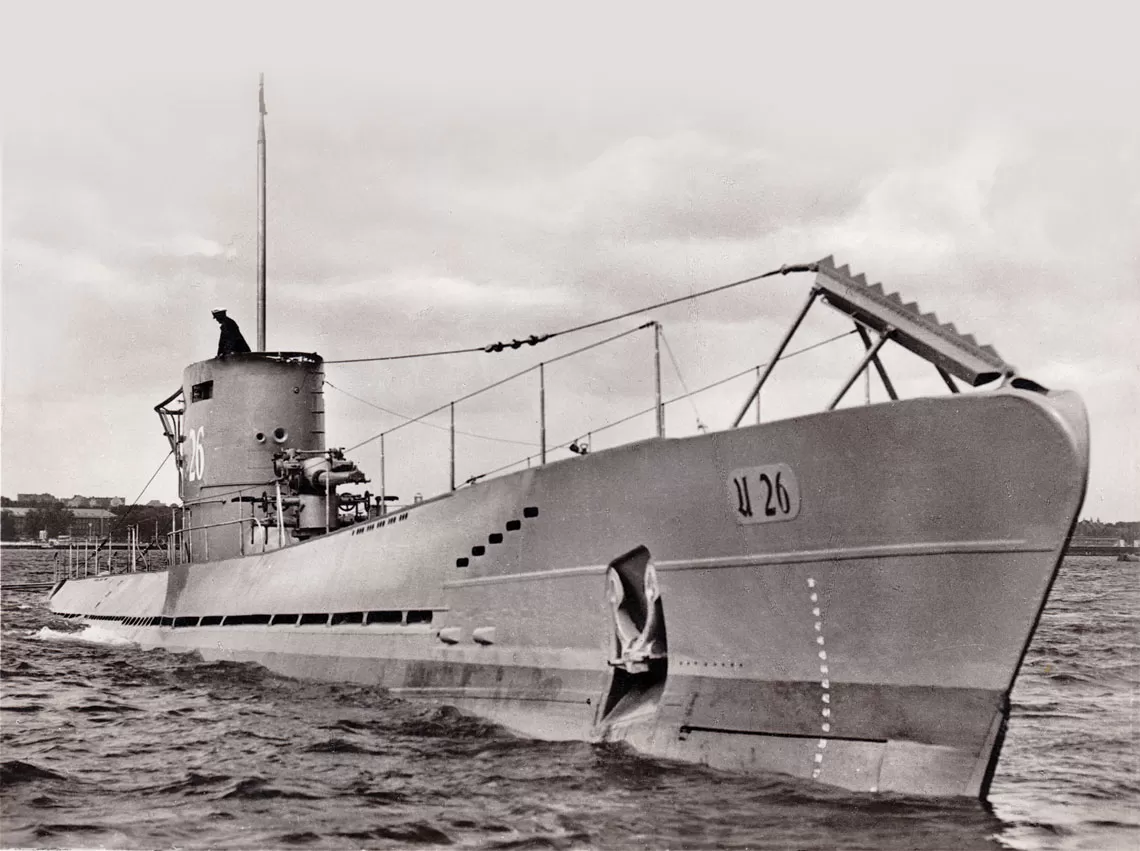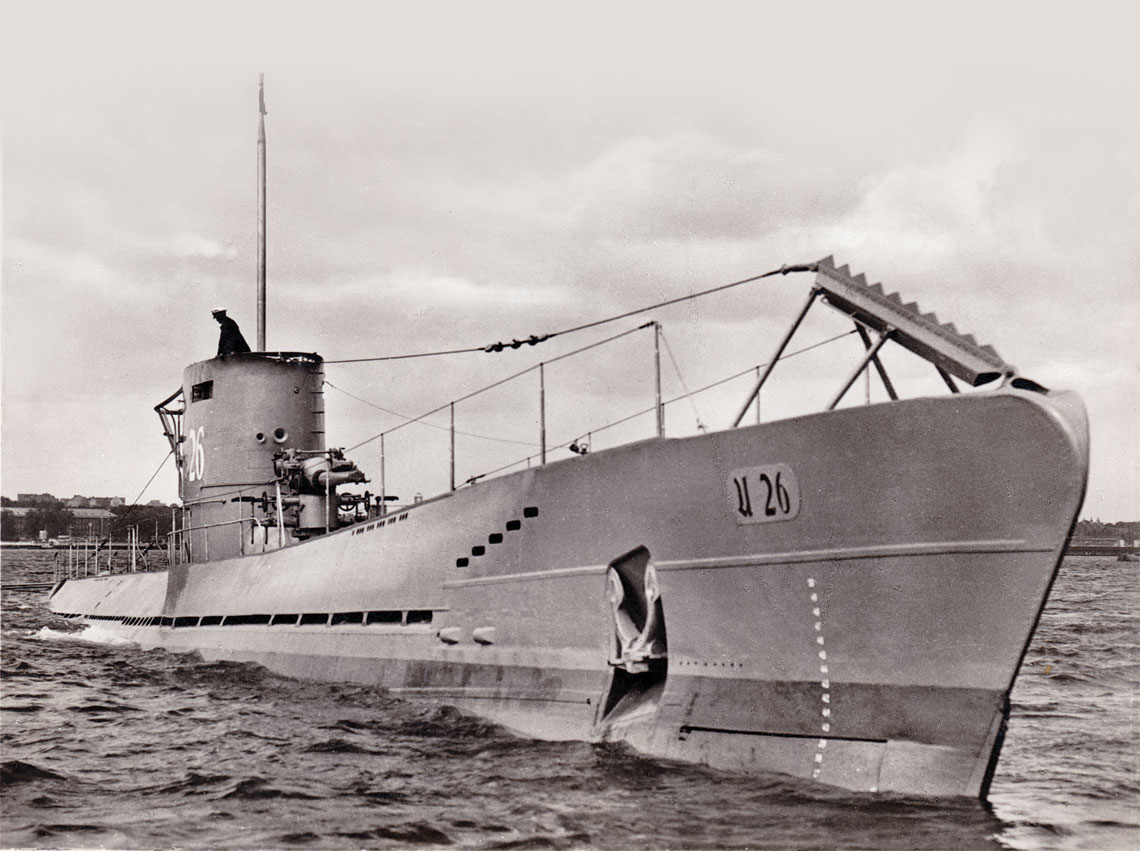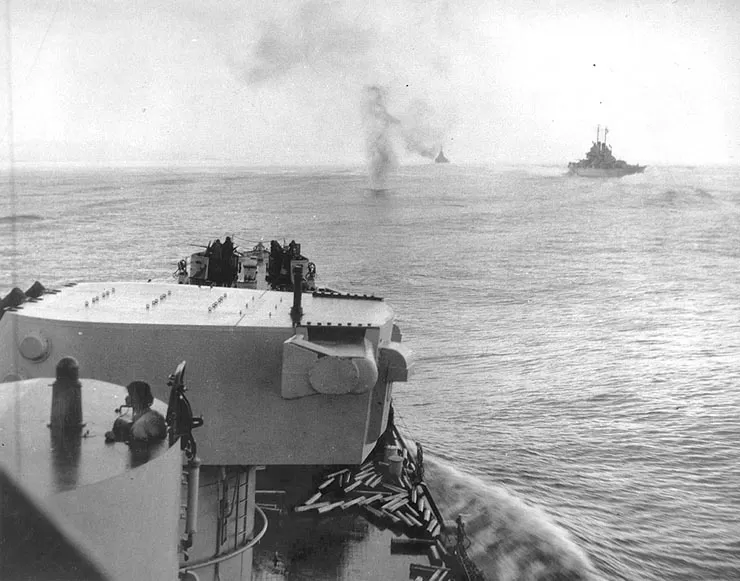
U-Booty Type IA

U 26 w 1936 g.r.
Bypassing the ban on the production of submarines imposed on Germany, the Reichsmarine decided, under their control, to build a prototype in Cadiz for friendly Spain and conduct the necessary tests with the participation of German specialists, which made it possible to conduct practical training of their own submarines. submarines of the younger generation.
The disguised birth of the U-Bootwaffe
A peace treaty signed in mid-1919, commonly known as the Treaty of Versailles, forbade Germany from designing and building submarines. However, some time after the First World War, the leadership of the Reichsmarine decided - contrary to the imposed ban - to use the experience of the domestic shipbuilding industry in the design and construction of submarines through exports and cooperation with friendly countries, which should have made it possible to further develop the German potential. Foreign cooperation was carried out through the Submarine Design Bureau Ingenieurskantoor voor Scheepsbouw (IvS), founded in 1922 and secretly funded by the German Navy. Its designers in the following years developed several designs borrowed from the First World War. In 1926, the office signed a contract for the construction of 2 units in the Netherlands for Turkey (project Pu 46, which was a development of the first military type UB III), and in 1927 a contract with Finland for the construction of 3 units (project Pu 89, which was an extension of the Yak III - project 41a, in 1930 a contract was signed for the construction of the coastal part also for Finland - project 179). In both cases, the projects were only improvements to the old designs.
In May 1926, IVS engineers resumed work interrupted at the end of the war on a 640-ton G-type submarine for the 364-ton UB III (Project 48). The design of this state-of-the-art unit aroused the interest of the Reichsmarine, which included it in plans the same year to replace the previously planned UB III.
Although the sea trials of the units built in the Netherlands were carried out entirely by German crews and under the supervision of German specialists, only the experience gained during the construction and testing of the "Spanish" unit had to be used to develop the future project. a modern “Atlantic” ship to expand its own forces of submarines provided by the Germans - an analogue of the prototype coastal unit, later built in Finland (Vesikko). At that time, Germany stepped up its intelligence-gathering efforts to obtain information from abroad about new submarine-related technologies and intensified its propaganda campaign to stir up public opinion against the restrictions of the Treaty of Versailles.
E 1 - "Spanish" prototype of a naval submarine.
As a result of the additional requirements imposed by the German fleet on the designers from the IVS office to increase the power of the machines, surface speed and flight range, the G project (640 tons) was increased by about 100 tons of additional fuel tanks. As a result of these changes, the width of the vessel has increased, especially in the underwater part. All ships built under the direction of IVS were equipped with surface-mounted diesel engines of the German company MAN (with the exception of 3 units for Finland, which received engines from the Swedish company Atlas Diesel), but at the request of the Spanish side of the future E 1, they were equipped with four-stroke diesel engines of the new designs of the manufacturer, having achieved more power: M8V 40/46, issuing 1400 hp. at 480 rpm.
After numerous previous changes, in November 1928, the IVS office finally named the Pu 111 project Ech 21 (on behalf of the Spanish businessman Horacio Echevarrieti Maruri, Basque, who lived in 1870-1963, the owner of the Astilleros Larrinaga y Echevarrieta shipyard in Cadiz), and later the Navy designated the project as E 1. The torpedo armament of the installation consisted of 4 bow and 2 stern tubes with a diameter (caliber) of 53,3 cm, adapted for a new type of 7-meter electric torpedoes that do not release air bubbles that would reveal the course of an underwater missile.
The most important technical innovations were used:
- the torpedo was pushed out of the tube by an air-holding piston and then released into the ship, eliminating the formation of bubbles that could reveal the position of the submarine firing the shot;
- the possibility of shuffling ballast tanks with diesel exhaust;
- pneumatic control of valves for filling and shuffling ballast tanks;
- electric welding of oil tanks (for diesel fuel and lubricating oil)
- equipping with an underwater listening device and an underwater receiving communication device;
- equipping the submersible system with a fast submersion tank.

